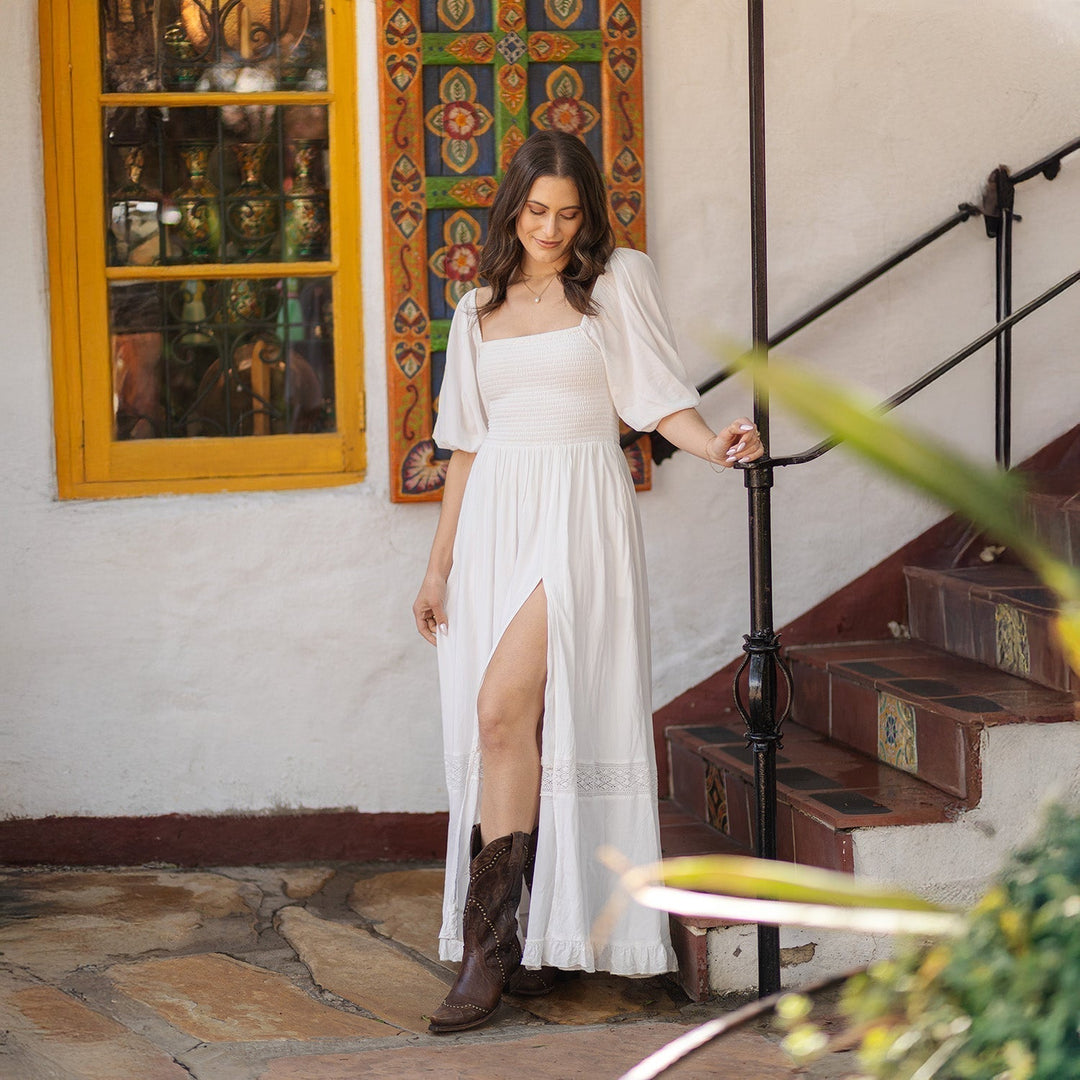6 Tips for Capturing the Perfect Beach Pictures
Going on a tropical vacation and want to take the perfect beach photo? There are a lot of factors to consider when it comes to getting the best shot, but luckily, we’ve perfected our beach photo shoots and are here to help you achieve yours. With the right light and naturally stunning backdrop, you’ll be taking amazing beach photos in no time. Read on for our top six tips for taking great photos at the beach that you’ll want to post on social media and frame in your house.
1.Timing is everything
The best time to take photos on the beach is during golden hour, which happens twice a day: the hour right before sunset and the hour just after sunrise. This time of day offers soft, warm light that can make your photos look beautiful and dreamy. Golden hour light can create beautiful shadows and highlights, making your beach photos more visually appealing. This is especially true when shooting on the west coast or any beach where you can see the sunset. On the other hand, sunrises give you a colder, more blue light that yields a beautiful yet more dramatic effect. If you're not at a sunrise beach, try shooting in the morning hours regardless.
Pro tip: Avoid taking beach photos midday when the sun is high in the sky, as it can cast harsh shadows and make the colors appear dull.

We took this picture couple minutes before sunset. The warm light highlights the yellow color of the dress and gives a softer touch and less harsh shadows.
@mafercalderong is wearing our Bella Maxi Dress in Daylily Yellow
2. Location, Location, Location
Yes, you're already at the beach, but not every spot is created equal. Look for an interesting or unique location on the beach that will make your photo stand out. It could be a natural rock formation, a pier, or just a palm tree creating interesting shadows on the sand. You'll also want to consider the angle of the sun and the direction of the wind to get the best shot. Having the sun to the side is arguably the best position so you’re not squinting with the sun in your eyes. Sometimes having the sun behind you can create a dreamy backlit look, but you’ll also risk some of the scenery looking washed out.
It’s also best to find a more secluded area without other beachgoers in the background. Make sure there are no distracting elements either, such as litter. Use a shallow depth of field to blur the background if necessary. That will make your life a lot easier when it comes to editing your photo later.

Walk around and try finding different perspectives. The soft background contrasts well with the harsher rocks and green seagrass in the foreground all while highlighting the soft color of the dress. Don’t just pose for every picture—add some movement for a more dramatic effect. In our experience, those often end up the most dynamic and natural looking shots.\
@alyssaraylene__ wearing our Sicilia Lace Maxi Dress in Sky Blue
3. Change Your Perspective
Look for interesting elements in the foreground such as seashells or rocks, which can add depth and dimension to your photos. Try to find something unique to include in your foreground to make your photos stand out or include naturally found props like driftwood or interesting rock formations.
Experiment with different angles, too. Get low to the ground and shoot upwards to capture the vastness of the sky (and make your subject look taller) or stand on a higher point and shoot downwards to show the expanse of the beach. Getting down low can also make for some more artsy shots like the waves crashing on the sand or getting the entire cotton-candy-colored sunset in the photo. While photos at eye level are beautiful, a change in perspective will really set your beach picture apart from the rest.

We had to crouch in a thorny bush for that wan but it was totally worth it. Sure, the sun light might be a bit to direct but it gives the photo a dreamy feel.
@infinitepassport wearing our Mona Mini Dress in Rose
4. Composition is Key
A classic principal of photography is the rule of thirds. It helps to frame your shot by breaking the image up into three horizontal and three vertical sections in order to properly frame your subject. You should aim to place the subject of your photo at one of the intersection points, which can create a more visually pleasing composition.
The horizon is an important element in beach photography, too. Make sure it's level and positioned carefully in your frame to create a sense of balance and harmony. If it's off-kilter, it can make the photo feel unbalanced and uncomfortable to look at.
Following the rule of thirds, use the leading lines on your camera or phone screen as a guideline to draw the viewer's eye into the photo. Look for natural lines like the curve of the shoreline, a pier or a boat on the water to lead the viewer's eye towards the subject or point of interest in the photo.
Don't forget about the details, either! Beach photos can be all about the big picture, but don't forget to zoom in on the details too. This could be anything from seashells in the sand to a close-up of a beach towel. These details can add interest and texture to your photos.

We placed the horizon on the top third to give the picture more depth and framed the subjects in the lower third about where the line intersects. Check your camera setting—on most modern cameras you can add gridlines to your viewfinder or display.
@mafercalderong and @travelwithtalia wearing our Mona Mini Dress
5. Pay Attention to Lighting
The light at the beach can change dramatically throughout the day, so pay attention to the direction of the sun and how it's affecting the scene you're photographing. We already mentioned that the golden hour (pre-sunrise and post-sunset) can be particularly beautiful for beach photos, creating warm, soft, and flattering light, but there are other times of the day that also lead to beautiful frame-worthy beach photos.
Use the natural light to your advantage. You shouldn’t need (and don’t want) to use the flash on your camera or phone, as it can create harsh shadows and wash out the colors of the photo. Instead, make sure that the natural light is hitting your subject or object from the side or behind, and use a reflector if needed to bounce light back onto your subject.
Adjust the exposure if necessary to avoid overexposed or underexposed areas in the photo.
If you're shooting in harsh light use a polarizing filter: A polarizing filter can help reduce glare and reflections on the water, making your beach photos clearer and more vibrant. This is especially useful if you're photographing on a bright, sunny day.

While these are the lighting situations we’d recommend, if you’re going for a more artsy look, try shooting into the light. We did not us any tools for this photo other than out camera and let the sun’s angle do its thing. Play with the light. You can use a reflector to bounce light back to your target.
@andrea_rx_fitness is wearing our Sicilia lace Maxi Dress in White
6. Edit to Enhance
It’s fine to use editing tools to enhance the colors and clarity of the photo, but don't overdo it. Remember, even professional photographers do mild retouching and editing on their photos, too. Keep it natural and true to the scene you captured.
Even if you take a great photo, a little bit of editing can take it to the next level. Adjusting the exposure, contrast and saturation can help bring out the colors in your photo and make it more vibrant. However, be careful not to overdo it and make your photo look unnatural.
Cropping the photo to improve the composition can also completely transform a photo. This will obviously help with any distractions in the background you may have missed, but it can also help create a new perspective for the photo.

Edit the photos to capture emotions you want to communicate in the image. Don’t just slap on filters and hope for the best. We took this picture with direct sunlight and the model was a bit underexposed while the background was a bit too overexposed. Luckily, camera technology does save a lot of color information, so we were able to lighten up the shadows and dark spots and did our best saving the color of the background. Unfortunately, we could not save all color information as you can see in the top righthand corner where the sunlight is coming from.
Pro Tip: It’s usually easier saving colors from bit underexposed images than with overexposed images.
@izzyisup is wearing our Bella Maxi Dress in Lavender
Bonus Tip
Have fun! Beach photography should be enjoyable and relaxing. Take your time, experiment with different techniques and enjoy the beauty of the beach.
Follow these tips and we guarantee you’ll take stunning beach photos that capture the beauty and essence of the beach—and your subject.
Follow us for more tips and tricks, and check out our dresses for your next photoshoot. 😊
Add subscribe and Products.







